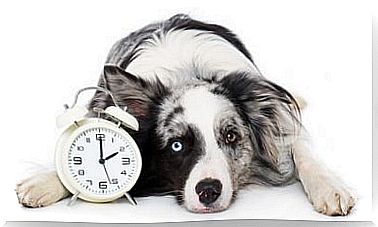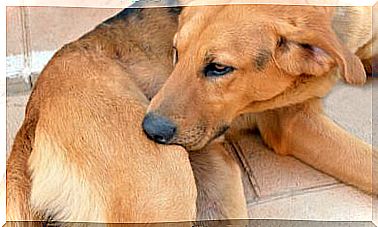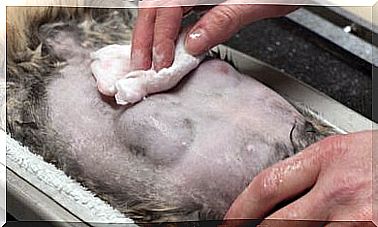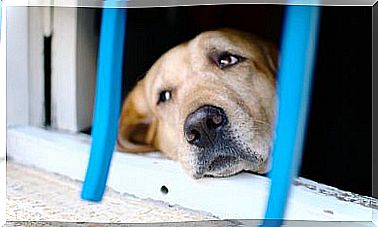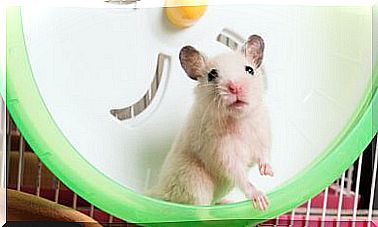Dog Feeding According To Age
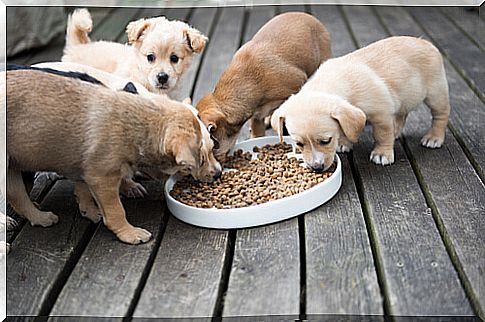
The physiological needs of many living things vary throughout their lives. Among these, food is one of the most important, and it is necessary for proper development. Therefore, in this article we give you some guidelines so that you know how the dog’s diet varies according to age.
The newborn dog
When it comes to talking about feeding the dog according to age, the newborn stage is perhaps a time that plays a fundamental role. For the first few days – and up to about 6 weeks of age – the main food source should be breast milk. Apart from supplying all the necessary nutrients, breast milk is a source of defenses and other vital components for the immune system.
Sometimes we do not have access to breast milk. Our first idea to feed the newborn may be milk, and it is a good idea. But you have to know that not all milk is suitable for canine consumption, and that is why we must resort to a special commercial formula. It is also important that, during this stage, we are attentive to the digestion of the newborn to confirm that everything is going well.
Dog feeding according to age: puppy
Once the first weeks have passed, our little pet will be able to start taking solid food. But be careful, because it is recommended that the food is soft or moistened to facilitate eating.

During this phase, the energy needs of our pet are enormous, even more than those of an adult. Therefore, the diet must be rich in several fundamental components: proteins, fats and calcium, which will provide enough energy to grow and develop.
Regarding the type of diet, although it varies depending on the breed and size of the animal, we can choose a special feed for juveniles, or give it foods that contain the above-mentioned nutrients, and that are easily digestible: meat or rice are good options.
The daily dose of food should be spaced about three daily intakes. As they grow, it can be reduced by two or even one daily intake. You should also bear in mind that this change in diet should be done gradually.
Adult dog feeding
If we feed it correctly, our pet will develop rapidly until it reaches the adult stage. Here the breed plays a determining role, since small dogs reach maturity at 12 months, while large or giant breed dogs take between 15 and 24 months to become adults.
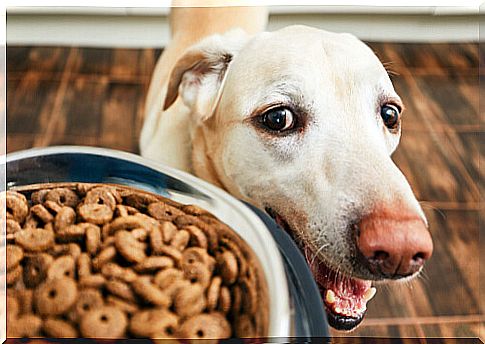
When they are adults, the nutritional requirements change, and the diet becomes a maintenance diet. The amount of energy they need is less than in the puppy phase. In this phase, your calorie and calcium intake should decrease to avoid being overweight. However, proteins and carbohydrates must continue to be present in the diet.
As with the rest of the growth phases, there are specialized feeds for this stage. If you have doubts, it is best to consult your veterinarian, who will indicate the best food based on the breed and size of your dog. For example, if our pet is very active, perhaps it is convenient that his feed provides him with enough energy to stay active.
How to feed an older dog?
The senior stage of a dog is associated with a series of factors: less daily activity, a lower rate of absorption of nutrients or a weaker immune system. That is why the diet at this stage should be that specially designed for them.

Because they are not as active as before, our dog’s diet should be low in calories and protein, to avoid overweight and kidney damage. The fiber percentage should be high, to facilitate digestion and evacuation.
It is also interesting that the selected feed contains minerals and antioxidants, which will help them absorb nutrients and keep their immune system stable.
